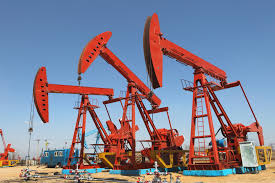
9th March 2025 admin Category :
Tom DiChristopher
(CNBC) Crude prices could rise to as much at $70 a barrel during the peak summer driving season next year as the oil market swings from a surplus to a significant deficit, said Francisco Blanch, head of global commodities and derivatives research at Bank of America Merrill Lynch.
In recent weeks traders have been hanging on every word from ministers of petro-states after officials confirmed earlier this month they would speak on the sidelines of the International Energy Forum next month about taking measures to prop up oil prices.
Blanch reiterated his view that OPEC is essentially finished as a cartel, as competing agendas among member states leave little room for compromise.
But even absent an OPEC deal, Merrill believes demand will outstrip supply by 800,000 barrels per day next year as deep cuts to capital spending bite into production, Blanch told CNBC’s “Squawk on the Street” on Monday. He noted the last time markets saw such a large deficit was 2010, when oil prices rose from about $78 a barrel to $95.
Meanwhile, car sales and fuel consumption in emerging markets should hold up as low interest rates push more capital into riskier developing nation assets, according to Blanch.
At the same time, Merrill believes the Federal Reserve is likely to raise interest rates only gradually, keeping a lid on the dollar and preventing crude from getting too pricey for holders of other currencies.
“That’s why we think the natural rebalancing mechanism of the market is going to continue throughout the next five or six quarters, so stronger demand and stagnating supply leads to higher price,” he said.
“We see a pretty robust demand expansion into next year as long as monetary policy remains accommodative,” he said.
It will be a long four weeks for oil markets in the lead-up to a gathering of OPEC members and other crude-producing nations, but the meeting will ultimately result in nothing, according to Matt Smith, director of commodity research at ClipperData.
Smith noted that Saudi Arabia’s crude production recently hit a record high. Its exports have increased by about 1 million barrels per day since early 2015 to 7.5 million barrels per day, according to ClipperData research.
“They’re just putting more oil onto the market. We’re seeing more oil coming onto the market from Iran, as well, and from Iraq, and so the rhetoric and the actual actions are very different,” he told CNBC’s “Squawk Box” on Monday.
Without a deal, oil prices are likely to remain stuck in a range between $40 and $50 a barrel into next year, when the impact of delaying big drilling projects finally shows up in reduced output, Smith said.
Until then, crude futures’ 200-day moving average will provide a technical level that is likely to keep prices above $40, he added. When oil nears $50, U.S. shale drillers will continue to add more rigs to take advantage of higher prices, particularly in regions with low-cost wells like the Permian Basin in Texas and New Mexico, Smith said.
Until then, crude futures’ 200-day moving average will provide a technical level that is likely to keep prices above $40, he added. When oil nears $50, U.S. shale drillers will continue to add more rigs to take advantage of higher prices, particularly in regions with low-cost wells like the Permian Basin in Texas and New Mexico, Smith said.
That increased drilling puts pressure on prices as traders fret over increased production in a market that has struggled to work through oversupply for roughly two years.







